Mid-early green gooseberry variety "Malachite"
Malachite is a gooseberry variety bred by domestic breeders. It has many positive characteristics, such as immunity to powdery mildew, frost resistance and the ability to produce fruit stably for more than 10 years. We propose to learn more about the advantages and disadvantages of the variety and the requirements that it makes for planting and growing.
The content of the article
- What is this gooseberry variety
- Characteristics and description of the bushes
- Characteristics and description of fruits
- Advantages and disadvantages of the variety compared to other varieties and hybrids
- Growing technology
- Features of growing this variety, depending on the region
- Pollinating varieties
- Reviews of summer residents
- Conclusion
What is this gooseberry variety
This is a medium-ripening gooseberry variety. - the first berries ripen in early July. The bushes bear fruit steadily, starting from 2 years after planting, for 12-15 years. Productivity - 3-4 kg per bush.
The harvest is stored in the refrigerator, cellar or basement no more than 10 days.
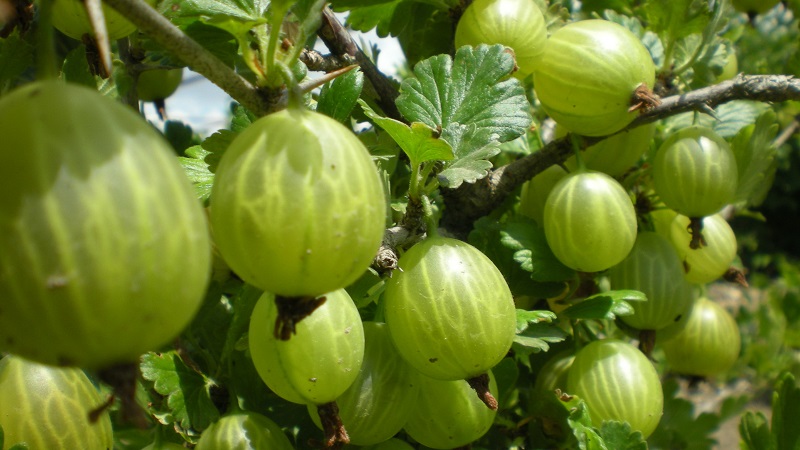
Brief history of origin and distribution
Malachite bred by breeders of the All-Russian Research Institute of Horticulture named after I. I. V. Michurina as a result of crossing the varieties Date and Black Negus.
Characteristics and description of the bushes
Bushes are medium-sized (height up to 1.5 m), with a spreading dense crown and semi-erect intertwining branches. Young shoots are green, slightly pubescent and thornless. Shoots older than 2 years have a gray-brown bark, slightly rough with short, thin, single thorns.
The leaves are large, matte, dark green colored, five-toed with sharp jagged tops. The leaf plates are concave, but have a straight base; there is slight pubescence on both sides.
The flowering period is in the second half of May.... At this time, small white bell-shaped flowers appear on the bushes.
Resistant to temperatures
It is a frost-resistant gooseberry variety.... The bushes tolerate a drop in air temperature to -30 ... -35 ° C and are not afraid of sudden temperature changes.
Moisture and drought resistance
Malachite has medium drought tolerance - prolonged lack of moisture leads to the formation of small and sour berries.
Wherein excessive watering and waterlogging of the soil cause decay of the root system plants.
Disease and pest resistance
The variety is resistant to powdery mildew, but has no immunity to anthracnose, septoria and rust.
Among pests for Malachite, aphids, moths and sawflies are dangerous.
Characteristics and description of fruits
Rounded or slightly pear-shaped berries, weigh an average of 5-7 g, are covered with a thin but strong skin of a bright green color with a malachite shade with an intense waxy bloom.
The pulp is tender, has a pleasant refreshing taste, in which sourness is clearly felt, due to the high content of pectins and vitamin C.
Reference. To make the berries sweeter, they are not removed from the bushes before they acquire a golden color.
Areas of their application
Due to its pleasant sweet and sour taste, Malachite berries are widely used in cooking.... They are consumed fresh, frozen, dried, added to fruit and fruit and vegetable salads, fruit drinks, compotes, preserves, jams, marshmallows, marmalade, syrups and toppings are prepared from them.
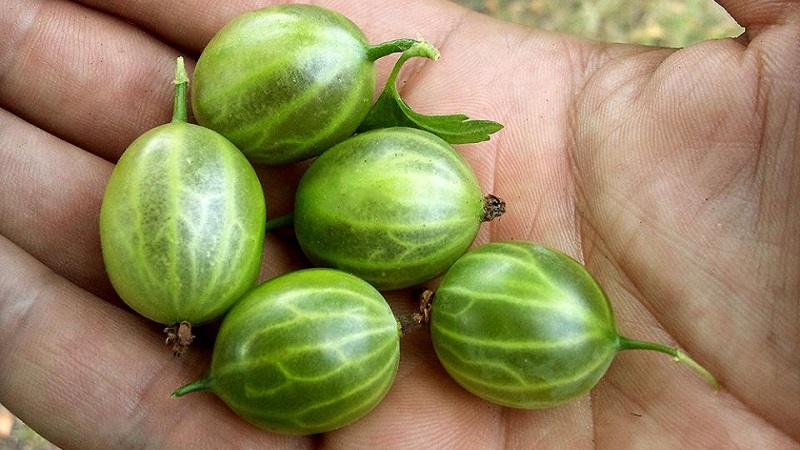
Gooseberry gives an unusual taste to dishes from meat, fish and poultry, suitable for decorating desserts and making homemade liqueurs, liqueurs and wine.
Reference. In winter, a decoction of Malachite berries is used to strengthen the body, treat colds and flu.
Advantages and disadvantages of the variety compared to other varieties and hybrids
The main advantages of the variety:
- stable long-term fruiting;
- the possibility of universal use of fruits;
- frost resistance;
- immunity to powdery mildew;
- good transportability;
- no shedding of fruits, even with a long stay on the branches.
Cons of Malachite:
- average yield;
- low degree of resistance to diseases, except for powdery mildew;
- tendency to intertwine branches.
Other gooseberry varieties:
Medium early gooseberry variety Honey
Growing technology
In order for gooseberry bushes to grow well, develop and bear fruit, you need to choose the right place on the site, prepare seedlings, plant and provide them with proper care.
Optimal conditions
Plants are planted in a lighted place, protected from gusty winds and drafts. with loamy or sandy loam loose and fertile soil located on a plain or hill. The permissible level of groundwater occurrence is no higher than 1.5 m.
When choosing seedlings, preference is given to specimens 30 cm high with 3-4 branches up to 15 cm long and a developed root system. Before planting, dried shoots are cut off from them, the roots are treated with ash and for 20-30 minutes. soaked in a solution of potassium permanganate.
Terms and rules of landing
Malachite is planted in spring (April) or autumn (mid-October)... The second option is more preferable, because it allows the seedlings to root better and harden before the onset of frost.
Landing rules:
- A week before planting, dig holes 60 cm deep and 50 cm wide in the prepared area.
- Add a nutritious soil mixture to them (5 kg of excavated soil, 100 g of ash, 80 g of superphosphate and 40 g of potassium sulfate).
- Place the seedling in the hole and spread its roots.
- Fill up the free space with soil so that the root section is 5 cm deep.
- Lightly tamp and water the soil at the rate of 5-10 liters of water under each bush.
Reference. The distance between the bushes should be 1.5-2 m.
Further care
Plants are watered as the soil dries - on average 1-2 times a week, pouring 10-15 liters of water under each bush. It is especially important not to allow the soil to dry out during the formation of ovaries, ripening of berries and before winter.
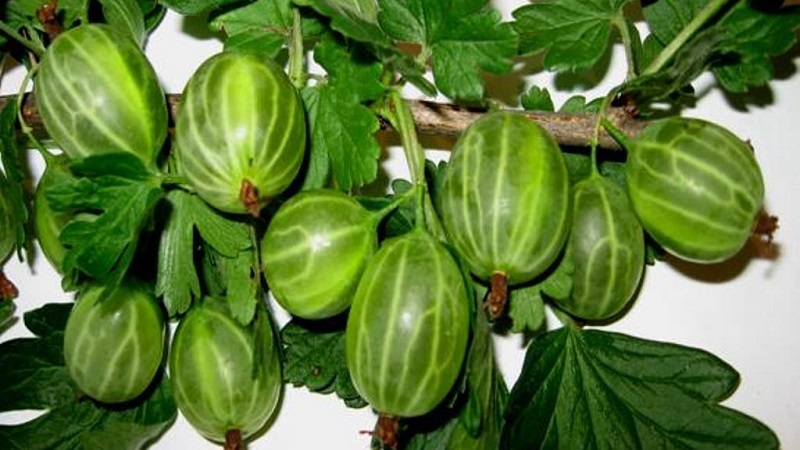
A day after watering or rain, the ground is loosenedto avoid the formation of a dry crust on the soil surface, improve aeration, moisture permeability and access of nutrients to the roots. At the same time, the soil is weeded, removing weeds.
Reference. In summer, to preserve moisture in the soil, it is mulched with sawdust, straw or nutshells.
Plants begin to feed 2 years after planting according to the scheme:
- in spring - 80 g of ammonium nitrate and 40 g of urea for each bush;
- after harvesting - 10 kg of compost, 20 g of potassium chloride, 40 g of saltpeter and 80 g of superphosphate.
So that the bushes grow even and compact, and the shoots do not fall to the ground, use one of the types of support:
- twine tying - the method is used when the shrub ripens in order to save the stems and berries from death;
- rigid supports on racks of a square or round shape - they are installed around the bush so that the branches rest on their rigid walls;
- trellises are the best option: the trellises are easy to install and do not interfere with the harvest.
After planting the bushes, they carry out the primary pruning of the crown - all shoots are shortened to 6 lower buds. After that, the procedure is carried out annually in the spring, before the start of sap flow.During the first 3 years, 10-15 skeletal branches are formed, then broken, damaged, dry, frozen, diseased and thickening shoots are removed.
Possible problems, diseases, pests
Diseases and pestsdangerous for Malachite:
| Disease / pest | Signs | Treatment / prevention |
| Anthracnose | First, the leaf plates are covered with dark brown spots, then darken and fall off. | Spraying with a solution of copper sulfate. |
| Septoriasis | Brown spots appear on the leaves. | The bushes are treated with manganese sulfate, boric acid, zinc. |
| Rust goblet | On the leaves and shoots, swellings of a bright orange color are noticeable, the shoots are deformed and bent. | For the treatment of bushes, Bordeaux liquid is used, for prevention - copper oxychloride. |
| Aphid | The larvae of the pest feed on leaf juices, provoking deformation of internodes. | To combat pests, plants are sprayed with ash or tobacco solutions and treated with Fufanon, Karbofos, Aktara, Trichodermin, Lepidotsid, Iskra, Gardona, Fitoverm, Ambush. |
| Fire | Bushes develop slowly and lose ovaries, resulting in reduced yields. | |
| Sawfly | Insects damage the ovaries, their larvae eat the seeds and gnaw the fruits. |
Wintering
Late autumn bushes cutleaving about 5 of the most fertile shoots, they carry out water-charging irrigation, clean the tree-trunk circle of debris and mulch it with peat, sawdust or humus.
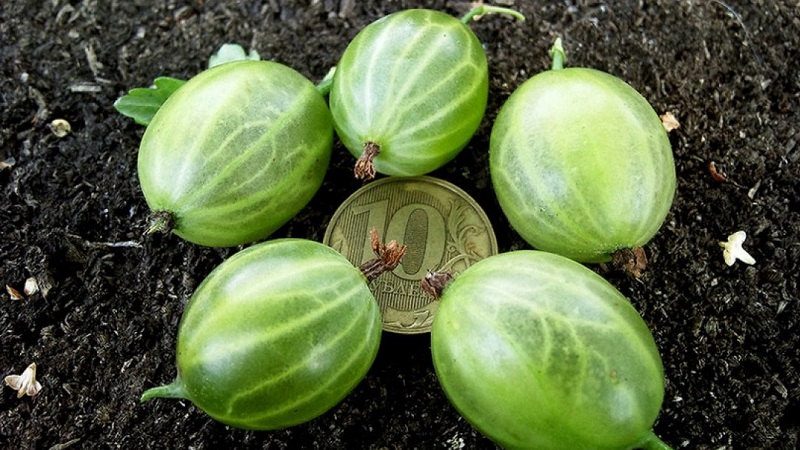
Due to the high degree of frost resistance, when growing Malachite in the south or in the middle lane, winter shelter is not required. In the northern regions with severe winters, where the air temperature drops below -30 ... -35 ° C, the bushes are covered with agrofibre.
Reproduction
Seed reproduction carried out by breeders, since in this case the plants often do not inherit varietal characteristics. Amateur gardeners propagate Malachite vegetatively - by layering, cuttings or dividing the bush.
In the first case, a young shoot is chosen, bent to the ground and buried in. After rooting, it is separated from the mother bush and planted in a permanent place.
For grafting a branch is cut from the plant and planted in a container with a wet peat-sand mixture. After rooting and overgrowing with leaves, the cuttings are transplanted into open ground.
When dividing a bush an adult plant is dug up and, using a sharp, disinfected knife, is divided into several parts so that each has points of growth and root processes. Delenki are planted in the ground.
Features of growing this variety, depending on the region
The gooseberry variety Malachite was bred specifically for growing in regions with unstable weather conditions. It tolerates frost well, the bushes do not stop developing even during dry periods.
However lack of moisture negatively affects the quantity and quality of the croptherefore, in southern areas with hot and dry summers, plants need more frequent and abundant watering. Otherwise, the requirements of the variety for cultivation and care do not change depending on the climate of the region.
Pollinating varieties
Malachite is a self-pollinated gooseberry. During flowering, both male and female flowers are formed on the bushes, so the variety does not need pollinators for fruiting.
Reviews of summer residents
Gardeners who have tried to grow Malachite gooseberries leave positive reviews about it.
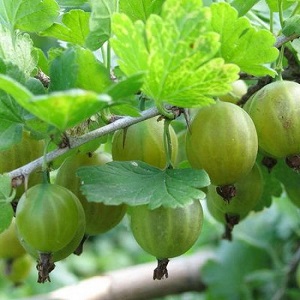 Inga, Novorossiysk: “I associate childhood with Malachite - this gooseberry grew in my mother's garden, and I remember how we picked berries and made jam from them. When I began to live separately, I also planted several bushes. I was afraid that I could not cope with leaving, but the variety is completely unpretentious. It bears fruit perfectly, and every summer we enjoy delicious berries ".
Inga, Novorossiysk: “I associate childhood with Malachite - this gooseberry grew in my mother's garden, and I remember how we picked berries and made jam from them. When I began to live separately, I also planted several bushes. I was afraid that I could not cope with leaving, but the variety is completely unpretentious. It bears fruit perfectly, and every summer we enjoy delicious berries ".
Andrey, Norilsk: “We have a fairly large plot, we grow several varieties of gooseberries. Malachite is one of the favorites.I really like that it does not require complicated care, except that you need to monitor watering and regularly treat the bushes from diseases and pests. At the same time, it bears fruit stably, the yield is not bad, the berries are large and tasty ".
Conclusion
Gooseberry Malachite has been known to summer residents for a long time. Despite the presence of disadvantages, among which are not too high yields and low resistance to diseases, it is popular due to stable and long fruiting, frost resistance, usefulness and delicious qualities of berries.